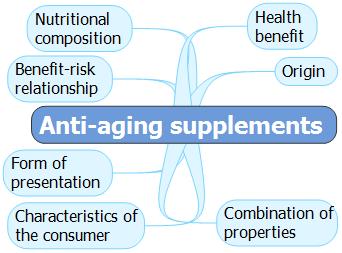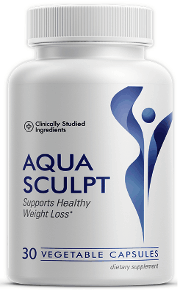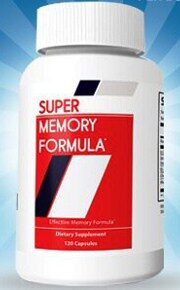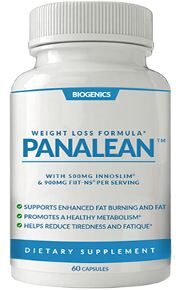Welcome to Best Anti-Aging Supplements
If you are searching for the best anti-aging supplements of 2026, you know the market is full of noise and empty promises.
Our mission is clear: to be your transparent source, strictly based on scientific evidence. We analyze the research, ingredient purity, and real-world results for you.
Moving beyond fleeting trends, rigorous data forms the foundation of this year’s most reliable recommendations
Consider this site your definitive roadmap. A tool designed to help you make informed decisions and take a firm step towards a healthier, more vibrant life.
Your long-term well-being is our priority. Your journey starts here.
Evaluation Criteria for Anti-Aging Supplements ↑
Our product selection process is governed by strict, objective parameters. To ensure the maximum quality and efficacy of the products we consider, our team applies the following evaluation criteria.
Scientific Evidence and Backing
As a primary evaluation criterion, our team verifies the existence of robust clinical studies in humans. We prioritize ingredients with clear mechanisms of action and efficacy demonstrated in peer-reviewed research.
Safety and Side Effect Profile
Safety is a non-negotiable evaluation criterion for our team. We investigate the compound’s safety history, potential drug interactions, and reported adverse effects, always prioritizing the end-consumer’s well-being.
Quality, Purity, and Manufacturing
Our team uses this evaluation criterion to ensure the formulation matches what is declared. We verify third-party certifications that validate the absence of contaminants and the accuracy of ingredients, ensuring a superior quality standard.
Dosage and Active Ingredients
We determine practical efficacy through this evaluation criterion. Our team confirms that each component is present at a clinically effective concentration, aligned with the studies backing its anti-aging benefits.
Transparency and Manufacturer Reputation
Supplier reliability is a key evaluation criterion for our team. We value manufacturers who are transparent about their processes, ingredient sources, and who openly share the research supporting their claims.
Cost-Benefit Analysis
As a final evaluation criterion, our team analyzes whether the price is coherent with the ingredient quality, effective dosage, and expected tangible benefits. We seek value optimization, not simply the lowest cost.
By integrally applying these evaluation criteria, our team ensures a rigorous selection process that is consistently aligned with our standards of excellence and commitment to the consumer.
If you are interested in the best anti-aging supplements and other products and practices that will help you stay young and healthy, you have come to the right place.
| Access to the content of your interest | |
| List of anti-aging supplements | |
| Types of anti-aging supplements by criteria | |
| ♠ | Health benefit |
| ♠ | Nutritional composition |
| ♠ | Risk-benefit ratio |
| ♠ | Origin of the supplements |
| ♠ | Consumer characteristics |
| ♠ | Form of presentation |
| ♠ | Composite criteria |
| Final notes | |
List of anti-aging supplements ↑
There is a close relationship between nutritional supplements and human aging process because it is scientifically proven the intake of many of these products helps to prevent diseases associated with aging or improve health status.
In this context, anti-aging supplements are food supplements whose consumption helps to slow down the aging process, prevent the appearance of diseases associated with this process or improve the health status of those who suffer from any condition related to it.
Types of anti-aging supplements ↑
This section and the following sections are devoted to the basics of the formation of the types of anti-aging supplements.
Formation of types
A food, nutritional or dietary supplement is a product designed to complement a certain diet with vitamins, amino acids, minerals or other nutritional ingredients.
According to this definition, food supplements are dietary supplements and cannot be considered conventional foods or medicines. Their intake must be directed to supply nutrients and other deficient elements in the food we consume.
When we want to choose a supplement we can start from the benefit we hope to obtain with its consumption; for example, improving memory.
In this case we submit supplements whose consumption can improve memory to analysis and we choose one of them. The very choice of the supplement leads to the formation of a type, i.e. a class of supplements with similar characteristics according to the expected benefit.
In addition to the attribute related to memory improvement, we can demand, for example, that the supplement be of natural origin. Then we must choose it considering the supplements of natural origin that have the potential benefit of improving memory.
In this example the attribute used is the conjunction of two attributes; the first referred to the health benefit of the supplement and the second referred to its origin.
For example, all the supplements that are composed by vitamins form the type of the vitamin supplements. In this case the property is the nutritional composition and the attribute is “to be composed by vitamins”.
Criteria
The selected property together with the attributes considered for obtaining types of supplements, constitute the criteria of formation.
The most used properties in the election of supplements and therefore in the formation of types of these are the following ones:
- Health benefit.
- Nutritional composition.
- Relationship between risks and potential benefits.
- Origin.
- Characteristics of the consumer.
- Form of presentation.
- Combination of two or more of the above properties.

The following sections are dedicated to the types of supplements according to the properties of this list.
Types of anti-aging supplements according to their benefit ↑
Dietary supplements are not medicines, but like conventional foods, many of them produce positive effects that benefit our health.
The fundamental reason that leads us to consume a supplement is the benefit it brings us.
How to name them?
When the effect of the supplement on the body can be characterized by an adjective, the types of supplements are usually named using that adjective. For example, super antioxidant supplements, aphrodisiac supplements, fat-burning supplements, etc.
Health benefit is often used as a starting point for choosing the best anti-aging supplements because aging is associated with declining health.
A feature of many supplements is that they often have several benefits just like medications.
In the first section of this writing we have made available to you a group of anti-aging supplements selected by our team, according to the health benefit declared by their manufacturers.
Differences between supplements and drugs
The rules for marketing medicines and supplements are different. Two differences between them are:
- The marketing of a drug requires an evaluation by the Food and Drug Administration[1] (FDA) in which it is proven to be effective and safe. Supplements are marketed without FDA evaluation and are only evaluated by the FDA after they are on the market.
- The label of a medicine contains statements about the diseases that can be treated with it. Supplement regulations do not allow the labeling of supplements to claim that they serve to treat, cure, mitigate, or prevent disease.
| Comparison of drugs and supplements. | ||
| Feature | Drug | Supplement |
| Requirement for sale | It requires an evaluation by the FDA that certifies the effectiveness and safety of the drug. | It does not require FDA evaluation for commercialization. |
| Label information | The label contains information on the diseases that can be treated with the drug. | The inclusion of information stating that the supplement serves to prevent, cure, treat or mitigate diseases is prohibited. |
Nutritional composition and types of supplements ↑
Human beings need about 50 nutrients to live. These include two fatty acids, eight essential amino acids, 20 minerals, 13 vitamins, carbohydrates and water.
We can use supplements to complement the diet and satisfy the deficit of some of these nutrients. The types of dietary supplements, according to the nutritional composition, are formed in the choice of these foods.
We can name the supplements of the first group with a phrase that begins with “supplement of”. For example, supplement of vitamin C, supplement of vitamin D.
The second group consists of supplements containing different types of nutrients; for example, supplements with vitamins and minerals.
We can name the supplements of this group starting with the phrase “supplement with”, followed by some of the components of the supplement, but through this form of naming not all the ingredients are determined.
For example, if we say supplement with vitamin A, the remaining ingredients of the product are not determined.
Nutritional composition is another important property to consider when choosing the best anti-aging supplements because as we age, we need to supply nutrients that the diet does not contain in sufficient quantities.
In the first section we have put at your disposal a group of the best supplements on the market, according to their nutritional composition, selected by our team through a thorough analysis.
Types of supplements by risk-benefit ratio ↑
Supplementation is often beneficial to health, but can also have adverse effects. This is why there are classifications of supplements according to the relationship between risks and potential benefits.
By performing a ranking using this criterion, we obtain types of supplements that help us decide when to choose one to complement our diet.
Once these scales are constructed, we form all the pairs of their possible values and build a new scale in which we assign a new value to each pair of values of the original scales.
Finally, we assigned each supplement the corresponding value on the new scale based on the potential health risks and benefits.
Example of risk-benefit classification
The classification of supplements by the Human Performance Resource Center[2] (HPRC) in the United States of America is an example of the application of the methodology described.
Finally, the pairs of values are represented in a table and three zones are established: green, yellow and red.
| Risk-benefit scale created by HPRC | ||||
| Potential benefits | Risks | |||
| Minimum | Low | Moderate | High | |
| High | 1 | 2 | 7 | 9 |
| Moderate | 3 | 4 | 8 | 10 |
| Low | 5 | 6 | 11 | 12 |
The color represents a new three-valued scale where the possible risks of supplement consumption are combined with the potential benefits.
Supplements with minimal or low risks and high potential benefits or minimal risks with moderate potential benefits are assigned to the green zone (boxes 1, 2 and 3 of the table).
As shown in the table, the yellow zone corresponds to supplements with moderate risks and high potential benefits, low or moderate risks and moderate potential benefits, or minimal or low risks and low potential benefits (boxes 4, 5, 6, 7 and 8 of the table).
Consumption decision
When choosing a supplement we determine which zone it corresponds to. If it belongs to the green zone, its consumption is recommended; if it corresponds to the red zone, we should not choose it and if it is in the yellow zone we should consult a health professional to decide.
For example, the supplement B-Complex 100 manufactured by Solgar contains all eight B-complex vitamins. The risks of consuming these vitamins are minimal and the potential benefits are high. For this reason, the supplement corresponds to the green zone and its consumption is recommended.
Types of anti-aging supplements by origin ↑
Another important property to take into account when choosing a supplement is its origin or provenance.
That is why there are types of supplements according to their origin. Among the most important are strictly natural supplements, natural supplements, identical to natural supplements and strictly synthetic supplements.
Strictly natural supplements
Strictly natural supplements are obtained from animal, vegetable or mineral nature and are physically processed for consumption by keeping them chemically the same as they are in their natural state. An example of such a supplement is cod liver oil.
Natural supplements
When the nutrients of the supplements are obtained in a process of decantation by which they are separated from other components with which they are mixed in their natural state, the supplements obtained in this way are called natural supplements. Examples of this type of supplement are omega-3 oils extracted from fish.
Identical to natural supplements
Supplements identical to natural supplements have a chemical composition similar to these, but are obtained in laboratories. An example of such a supplement is vitamin C produced from corn.
Strictly synthetic supplements
Finally, strictly synthetic supplements are obtained in laboratories, differ chemically from natural supplements, are usually less effective and are absorbed less than the latter.
A well-known example is the synthetic vitamin E called d-l-alpha-tocopherol. It is chemically different, less effective, and less absorbed than the naturally occurring vitamin E called d-alpha-tocopherol.
When the label of a supplement does not clearly specify the origin, the supplement is usually strictly synthetic. For example, if the label of a vitamin E supplement has the phrase alpha-tocopherol printed on it, it is very likely the component is d-l-alpha-tocopherol and not d-alpha-tocopherol.
Consumer characteristics and types of supplements ↑
When choosing a supplement, you should consider your health status and other characteristics, which may include your eating habits or activity.
In this context the types of supplements according to the characteristics of the consumer are important among which are, for example, supplements for athletes, supplements for vegans and supplements for the elderly.
Types determined by the form of presentation ↑
An important feature of the supplements is that they are consumed orally. When we are going to choose a supplement we are interested in its form of presentation.
Supplements are marketed in one of the following forms:
- Tablets.
- Capsules.
- Powder.
- Gel capsules.
- Liquid.
Types according to compound criteria ↑
Many times when we are going to choose a supplement we use combined attributes as the following examples show.
- Testosterone supplements for men.
- Natural protein supplements.
- Vitamin supplements for hair.
In the first example, an attribute of the nutritional composition is combined with one of the characteristics of the consumer; in the second, an attribute of the nutritional composition with one of the origin of the supplement; and in the third, an attribute of the nutritional composition with one of the health benefit.
Final notes on the best anti-aging supplements ↑
We hope that reading this page on the best anti-aging supplements has helped you to meet your needs.
Most published web pages on the Internet about anti-aging supplements focus on nutritional composition rather than benefits. On this page we have placed a section from which you can access supplements according to their benefits.
If the information we have offered you has been useful, share it with your friends in social networks.
References:
1. ↑ Food and Drug Administration. http://www.fda.gov
2. ↑ Human Performance Resource Center. https://www.hprc-online.org/









Awesome